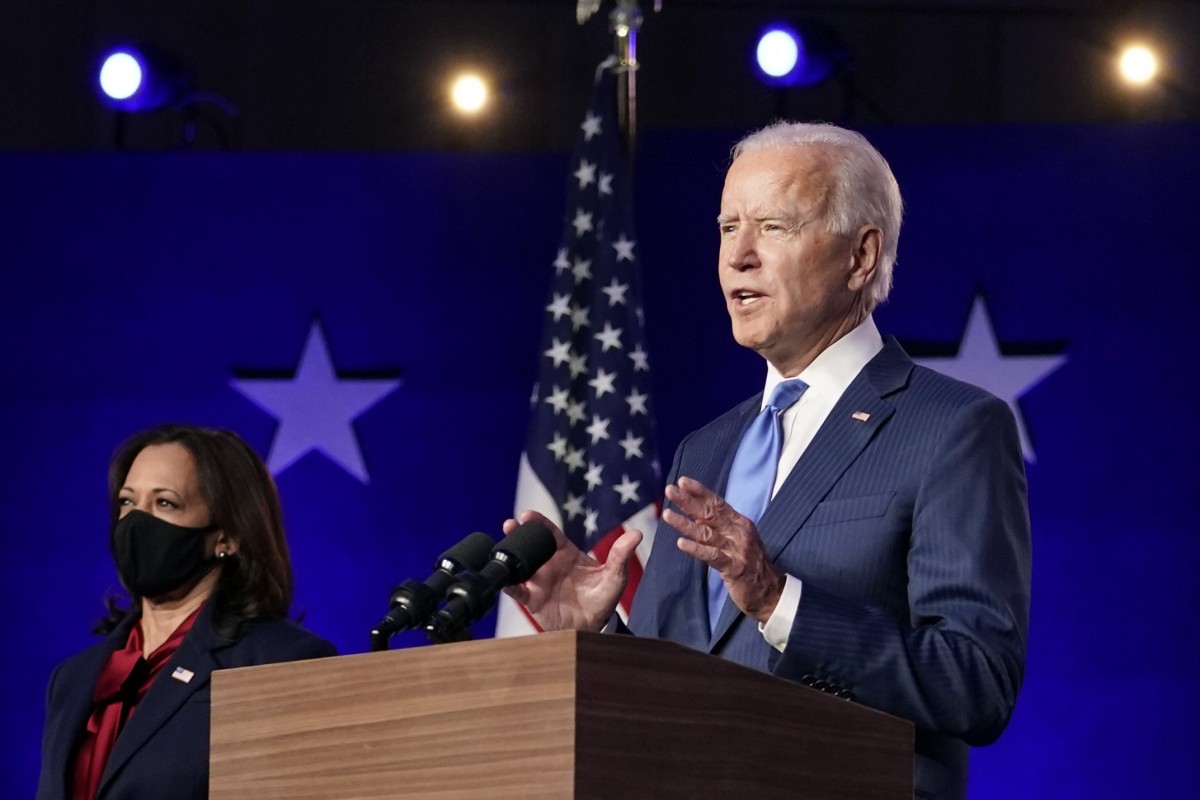Major news networks and the Associated Press have declared Joe Biden the winner of the 2020 presidential election.
What now? Here’s what we know.
What does the media’s “call” of a winner actually mean?
The media’s “call” of Biden as the winner doesn’t hold force of law. It’s simply the best estimation by the networks’ data-crunchers.
Specifically, media “decision desks” look at the votes that have been counted in the states and what remains to be counted. They announce a “call” whenever they think the trailing candidate has run out of ways to add enough votes to win.
The media’s call carries weight in public perceptions of who has won, and it can prompt a candidate to declare victory or the trailing candidate to concede, which can further shape perceptions. If there’s a switch in the party occupying the White House, the call could accelerate the transition process.
How long will it be until we know the official results?
Federal law allows states more than a month after the election to finalize the results. This year, that “safe harbor” date is Dec. 8. This leaves time for election officials to determine whether provisional ballots are valid. And in many states, overseas military ballots are given a grace period to arrive late.
By Dec. 8, if states have wrapped up the certification of their results, Congress pledges not to dispute the results. However, there’s some legal ambiguity there, legal experts say.
The trailing candidate can also play for time by requesting recounts (and paying for them if the margin isn’t close enough for an automatic, state-funded recount) or going to court to challenge the results in certain states. In fact, President Donald Trump’s campaign’s litigation offensive is already under way.
Over the next few weeks, these efforts — finalizing and certifying ballot counts, adjudicating any recounts, and battling in court — will play out.
How does the process of casting electoral votes work?
Once the state-by-state lineup of electors is settled, the most important date is Dec. 14, when those electors cast their votes.
On that day, the electors sign and seal six certificates listing their votes for president and vice president. One certificate is sent to Congress, two are sent to the secretary of state in their state, two are sent to the National Archives, and one is sent to the court of the district in which the electors have assembled. (If these certificates are not received by Dec. 23, either the sitting vice president or the archivist of the U.S. “shall send a special messenger to the district judge” who must hand over his original copy in person. Failure to do so brings a $1,000 fine.)
What are “faithless” electors?
The number of electoral votes earned by each candidate could vary from what they seemed to have won if “faithless” electors decide to vote for someone other than their candidate. This has happened occasionally in small numbers in recent decades (and as recently as 2016, when two Texas electors didn’t vote for Donald Trump and a Hawaii elector and four Washington state electors didn’t vote for Hillary Clinton). But it has never been enough to shift the result.
This year, the Supreme Court allowed states greater leverage in requiring electors to cast their assigned votes.
Could electors be chosen on some other basis than the popular vote in a given state?
There are some exotic potential scenarios that could change this process. Biden could win Arizona, Georgia, Michigan, Wisconsin, or Pennsylvania, and the Republican-controlled legislature in one or more of those states could overrule its voters, presenting Congress with a slate of Trump electors. (Pennsylvania legislators have pledged not to take this route.)
If any state did this, the situation would have to be sorted out by Congress. But this would be a drastic move, and there’s no indication yet that this will happen.
When do the electoral results truly become official?
Congress officially counts the electoral votes in a joint session at 1 p.m. on Jan. 6.
The president of the Senate — a position held by the sitting vice president — presides. The electoral certificates are unsealed and counted by state in alphabetical order. Objections may be made in writing, and lawmakers need to sort out whether the objections are justified.
Ultimately, the vice president declares a winner. At this point, the election is officially decided and simply awaits the inauguration.
When is the inauguration?
At noon on Jan. 20, the outgoing president’s term expires, and the winning candidate is sworn in on the West Front of the U.S. Capitol. And with that, the 2020 presidential election will finally be over.
This article was originally published by PolitiFact.



